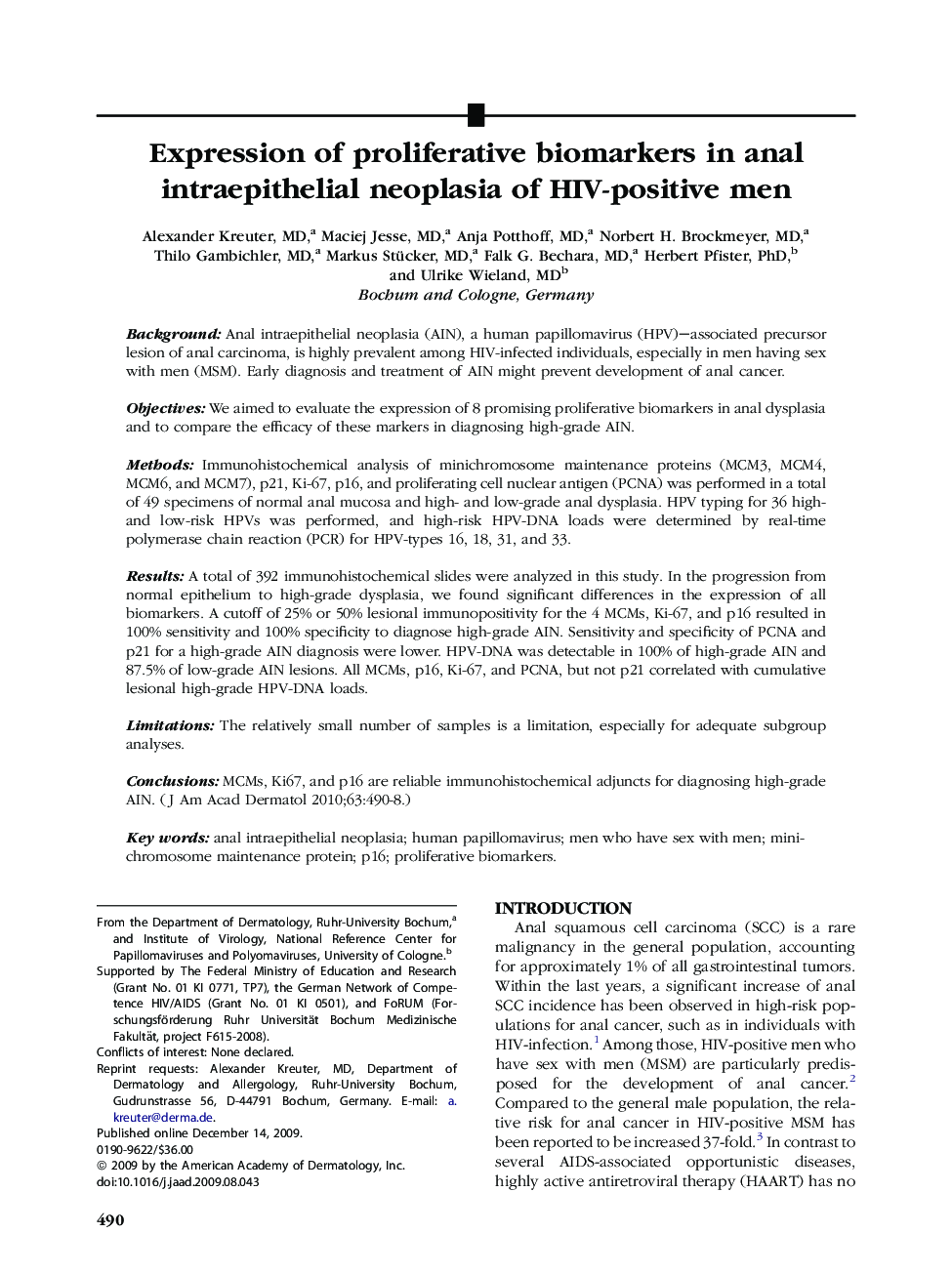| Article ID | Journal | Published Year | Pages | File Type |
|---|---|---|---|---|
| 3208093 | Journal of the American Academy of Dermatology | 2010 | 9 Pages |
BackgroundAnal intraepithelial neoplasia (AIN), a human papillomavirus (HPV)–associated precursor lesion of anal carcinoma, is highly prevalent among HIV-infected individuals, especially in men having sex with men (MSM). Early diagnosis and treatment of AIN might prevent development of anal cancer.ObjectivesWe aimed to evaluate the expression of 8 promising proliferative biomarkers in anal dysplasia and to compare the efficacy of these markers in diagnosing high-grade AIN.MethodsImmunohistochemical analysis of minichromosome maintenance proteins (MCM3, MCM4, MCM6, and MCM7), p21, Ki-67, p16, and proliferating cell nuclear antigen (PCNA) was performed in a total of 49 specimens of normal anal mucosa and high- and low-grade anal dysplasia. HPV typing for 36 high- and low-risk HPVs was performed, and high-risk HPV-DNA loads were determined by real-time polymerase chain reaction (PCR) for HPV-types 16, 18, 31, and 33.ResultsA total of 392 immunohistochemical slides were analyzed in this study. In the progression from normal epithelium to high-grade dysplasia, we found significant differences in the expression of all biomarkers. A cutoff of 25% or 50% lesional immunopositivity for the 4 MCMs, Ki-67, and p16 resulted in 100% sensitivity and 100% specificity to diagnose high-grade AIN. Sensitivity and specificity of PCNA and p21 for a high-grade AIN diagnosis were lower. HPV-DNA was detectable in 100% of high-grade AIN and 87.5% of low-grade AIN lesions. All MCMs, p16, Ki-67, and PCNA, but not p21 correlated with cumulative lesional high-grade HPV-DNA loads.LimitationsThe relatively small number of samples is a limitation, especially for adequate subgroup analyses.ConclusionsMCMs, Ki67, and p16 are reliable immunohistochemical adjuncts for diagnosing high-grade AIN.
